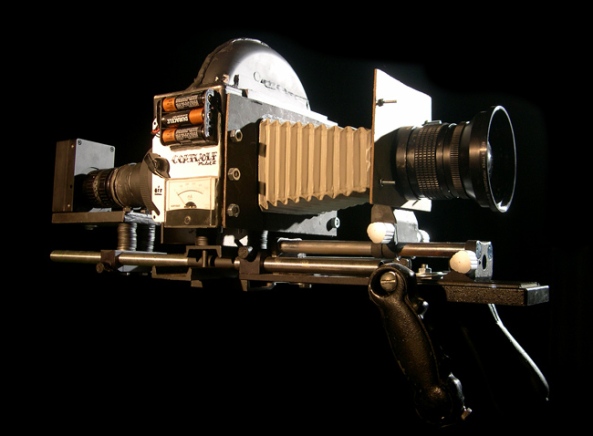I’m usually kinder to movies that have flimsy narratives if it can innovate visually. It deserves to be said then that what Evan Glodell and his team have accomplished is truly innovative. By literally building a camera from the ground up, they have created an aesthetic all its own, drawing from music videos, dusty and gritty sci-fi and stylized action montages. Their film “Bellflower” achieves a strikingly apocalyptic look that sadly the screenplay doesn’t earn.
It’s the story of two friends, Woodrow (Glodell) and Aiden (Tyler Dawson), who have a dream to build a flamethrower and demon roadster in the event of the apocalypse. They’re inspired by Mad Max, so its no wonder that “Bellflower” looks like a digital reimagining of “The Road Warrior” set in modern day suburbia.
Woodrow meets the tantalizing and free-willed Milly (Jessie Wiseman), who finds an adorable innocence in his clean-cut look and high-pitched whimper of a voice. But after hearing of his plan to build a flamethrower, she encourages his daredevil side, urging him on a spur of the moment trip across the country in his custom car that dispenses whiskey.
When their dream vacation ends, the pair return home, the flamethrower and death mobile are completed, and Milly cheats on Woodrow. This character drama charts the struggle of these immature characters living out a fantasy to deal with reality and adult emotions, and it does so in the gravest, most stylistic of terms.
Let’s talk about the look of “Bellflower” a little more. “Bellflower” was shot on a Coatwolf Model II camera, which I mention because Glodell built this camera himself. “This camera does things that no other camera on the planet can do,” Glodell says in an article you can read here. “It can do tilt-shift effects with any lens. It can make a Steadicam shot from five feet away look like a telephoto shot from 100 feet away. It’s like looking out of a whale’s eye.”
Truth be told, “Bellflower” looks like nothing I’ve ever seen, and it looks like that in the film’s entirety. We can get images that simultaneously split between deep focus and blurred clarity. There is literal dust and scuffs on the frame to create a figurative added layer of depth without the crutch of 3-D. The color palette can be an eye-popping bright red to give the film its scavenger, “Road Warrior” quality, or it can be washed out in greens and blues that look like pastel works of art churned mercilessly through after effects.
What’s more, the style with which cinematographer Joel Hodge controls this ingenious contraption is to handle it aggressively. The camera doesn’t bob and weave like in a standard docu-realism style, but it has visual tremors that give these otherwise strange still-lifes in sepia and in slow motion a truly unsettling sensation. Watch in one climactic scene where Woodrow steps out of an alley to set Milly’s clothes aflame. With almost no effort at all the light dissipates from behind him and the Earth seems to shake at his presence. We may not believe him to be the Lord Humungous that Aiden describes, but he certainly looks the part.
That’s the big problem with “Bellflower,” that it looks so brilliantly out of this world and yet neither the characters’ actions nor personalities can even begin to match that gravity.
It almost goes without saying that the acting and screenwriting are atrocious. It’s not hammy soap opera acting but acting from kids told to be themselves who don’t know how to be cool and natural on cue. I think Aiden is maybe the worst example of this. He’s not a bro archetype but a strangely charismatic slacker, trying so hard to be cool and comfortable that there’s something off.
But the characters too are a bit of a mess. None of them have the ability to say no. They eat bugs, sleep around, fight and drink as though using rationality would halt the movie dead in its tracks. They don’t seem to have jobs or responsibilities but have unlimited resources to buy and build flamethrowers and muscle cars and leave home without a moment’s notice.
The whole point of the movie is that these people without much of a backbone or conviction believe they will have the capacity to take over the world when the apocalypse arrives, and this overconfidence will proceed to get them into trouble. But what “Bellflower” doesn’t get is that these people are already living a fantasy. Their life looks and feels so unreal, and yet we’re supposed to suspend more disbelief.
It leads to an obtuse, arty and insane series of endings both hypothetical, imagined and real. The possibilities these characters feel they are capable of far exceed the movie’s otherwise gritty, natural qualities.
I don’t mean to kick a small indie while it’s down. “Bellflower” looks fantastic. I can only hope that Glodell returns to another project with a stronger sense of direction.
2 ½ stars
